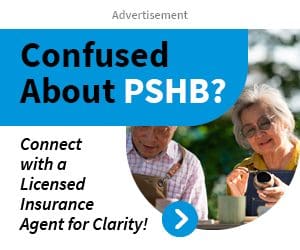Key Takeaways
-
The 2025 Postal Service Health Benefits (PSHB) plans bring transformative changes, designed exclusively for USPS employees, retirees, and their families.
-
With tailored options and enhanced Medicare integration, these plans aim to deliver more streamlined and cost-effective healthcare coverage.
A New Era for USPS Workers: Understanding PSHB in 2025
The 2025 Postal Service Health Benefits (PSHB) plans represent a significant departure from the Federal Employees Health Benefits (FEHB) program. Designed specifically for Postal Service employees, retirees, and their families, the PSHB program offers tailored solutions to meet your unique needs. Let’s dive into what makes these plans so distinctive and how they could redefine your healthcare experience.
The Big Shift: Why PSHB Replaces FEHB
Starting January 1, 2025, the PSHB program officially replaced the FEHB for USPS workers. This transition was part of the Postal Service Reform Act of 2022, aimed at creating a more sustainable and efficient healthcare system for postal employees. Unlike FEHB, the PSHB focuses exclusively on the needs of USPS workers and their families, ensuring benefits align closely with your specific work environment and retirement plans.
This change isn’t just a name swap—it’s a complete overhaul of how your health benefits are managed, with features designed to enhance affordability, simplify Medicare integration, and provide comprehensive coverage options.
Enhanced Medicare Integration: A Key Advantage
If you or your family members are eligible for Medicare, PSHB plans work seamlessly to coordinate benefits. For those enrolled in Medicare Part A and Part B, PSHB plans often provide:
-
Reduced Out-of-Pocket Costs: Many PSHB plans waive deductibles and lower copayments when paired with Medicare.
-
Premium Reimbursements: Some plans offer reimbursements for your Medicare Part B premiums, putting money back in your pocket.
-
Automatic Prescription Drug Coverage: You’re automatically enrolled in a Medicare Part D Employer Group Waiver Plan (EGWP), ensuring prescription drug costs are managed efficiently.
Tailored for USPS Workers: What Sets PSHB Apart
One of the standout features of the PSHB program is its focus on customization. Unlike FEHB plans, PSHB options are designed with postal workers’ specific healthcare needs in mind. Here are a few ways these plans stand out:
-
Diverse Plan Offerings: You can choose from a range of plans that fit your budget and health priorities, whether you’re single, have a family, or are approaching retirement.
-
Comprehensive Supplemental Benefits: Most plans include dental, vision, and hearing benefits, recognizing the importance of these services to overall health.
-
Streamlined Enrollment Process: With automatic enrollment for Medicare-eligible participants and easy access to plan information, navigating your options has never been simpler.
Costs and Savings: How PSHB Plans Impact Your Budget
Healthcare costs are always a significant consideration, and the PSHB program aims to make coverage more affordable for USPS workers. Here’s what you need to know about costs:
-
Government Contributions: The USPS continues to cover a significant portion of your premiums, just as it did under FEHB.
-
Out-of-Pocket Caps: The introduction of caps on prescription drug costs under Medicare Part D, along with lower coinsurance for certain services, means fewer surprises when it comes to medical bills.
-
Efficient Cost Management: PSHB plans focus on preventive care, which can help you avoid higher healthcare expenses down the line.
Key Enrollment Dates and Timelines
Keeping track of enrollment timelines is crucial to ensuring you have the coverage you need. Here are the critical dates to remember:
-
Annual Enrollment Period: The 2024 Open Season ran from November 11 to December 13, 2024, and changes made during this time took effect on January 1, 2025. If you missed the Open Season, changes are only possible during Qualifying Life Events (QLEs).
-
Medicare Coordination: For those eligible, enrolling in Medicare Part B is essential to maintain your PSHB coverage unless you qualify for an exemption.
What Happens If You’re Already Covered
For those already enrolled in an FEHB plan or Medicare, the transition to PSHB may have brought questions about continuity. Here’s what you need to know:
-
Automatic Enrollment: If you were an FEHB enrollee in 2024, you’ve been automatically transitioned to a corresponding PSHB plan that aligns with your previous coverage.
-
No Coverage Gaps: Your healthcare coverage continues uninterrupted, ensuring you can access medical services as usual.
-
Options to Switch Plans: During Open Season, you can review your options and choose a different PSHB plan if it better suits your needs.
How Retirees Benefit from PSHB Plans
Retirees often face unique challenges when it comes to healthcare, but PSHB plans address these concerns directly. With PSHB, you’ll find:
-
Comprehensive Coverage: Many PSHB plans include supplemental benefits like dental and vision care, which are vital for retirees.
-
Simplified Costs: Coordinating with Medicare ensures retirees experience lower out-of-pocket expenses for both routine and unexpected medical needs.
-
Lifetime Access: Once enrolled, retirees can maintain their PSHB coverage for life, provided they meet eligibility requirements.
Navigating Plan Choices: Tips for Selecting the Right PSHB Plan
Choosing the right plan can feel overwhelming, but with a clear understanding of your priorities, it doesn’t have to be. Consider these tips:
-
Assess Your Needs: Evaluate your health priorities, including prescription drug use, routine care, and any specialized services you might require.
-
Compare Costs: Look at premiums, deductibles, and out-of-pocket maximums to understand how each plan fits your budget.
-
Check Provider Networks: Ensure your preferred doctors and specialists are in-network to avoid unexpected costs.
-
Leverage Resources: Use USPS and PSHB tools to compare plan features and find one that aligns with your needs.
The Role of Medicare Part D in PSHB Plans
Prescription drug coverage is a major component of healthcare, and PSHB plans address this through automatic enrollment in a Medicare Part D EGWP. Here’s how this benefits you:
-
Out-of-Pocket Cap: The $2,000 annual cap on prescription drug expenses introduced in 2025 provides financial relief.
-
Simplified Billing: Combining PSHB and Medicare ensures a smoother process for managing your prescription costs.
-
Wide Access to Medications: EGWP plans typically include a robust formulary, so you’ll have access to the medications you need.
The Importance of Staying Informed
With so many changes under the PSHB program, staying informed is critical. Here are some steps to keep you up to date:
-
Review Your Annual Notice of Change (ANOC): This document outlines any updates to your plan, including costs and benefits.
-
Stay Engaged During Open Season: Use this time to reassess your healthcare needs and make adjustments if necessary.
-
Utilize USPS Resources: The USPS provides tools and support to help you navigate your options and make informed decisions.
Looking Ahead: What to Expect from PSHB
As the PSHB program continues to evolve, you can expect ongoing improvements aimed at enhancing your healthcare experience. From expanded plan options to innovative cost-saving measures, PSHB is designed to adapt to your needs. Staying proactive and informed ensures you’ll maximize the benefits of this program.
A Healthier Future for USPS Workers
The 2025 Postal Service Health Benefits plans are more than just a replacement for FEHB—they’re a step forward in addressing the unique needs of USPS employees and retirees. With tailored options, seamless Medicare integration, and a focus on affordability, PSHB plans offer a new level of healthcare coverage. Take the time to explore your options and ensure you’re taking full advantage of the benefits available to you.











